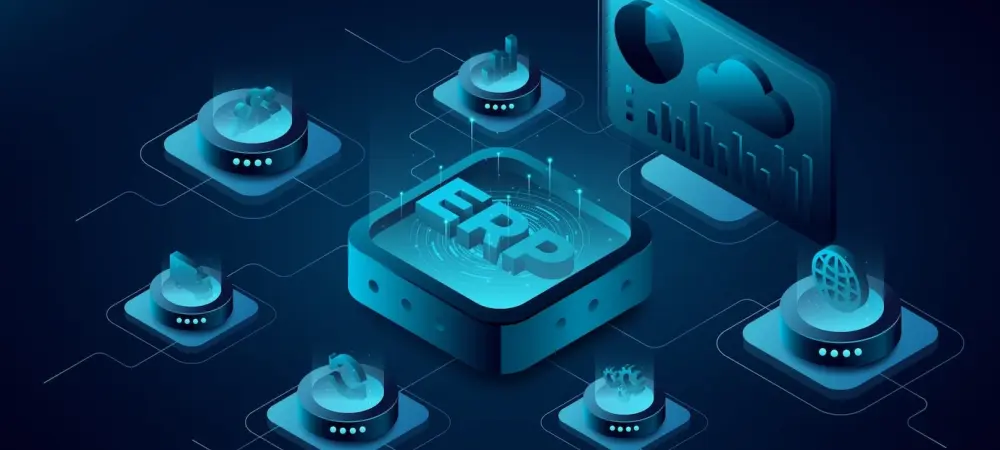Implementing a new Enterprise Resource Planning (ERP) system involves a complex data migration process that can determine the success or failure of the entire project. Data migration is a critical phase where existing business data is transferred to the new ERP system. Missteps in this process can lead to costly errors and delays, disrupting business operations and impacting profitability. ERP data migration goes beyond a simple transfer of information, requiring careful planning and management to address real-world data inconsistencies. This is crucial since overlooking these intricacies can result in errors like incorrect invoicing or mismanaged inventory levels, ultimately affecting the business’s bottom line.
Understanding the Complexity of Data Migration
Data migration in an ERP implementation involves transferring vast amounts of information from legacy systems to the new platform while ensuring consistency and integrity. One of the primary challenges businesses face is the tendency to underestimate the complexity of this process. Often, organizations mistakenly assume that using predefined templates or basic tools like Excel can effortlessly handle data migration. However, this approach can lead to significant issues. Real-world data often contains inconsistencies, duplicates, and inaccuracies that require meticulous cleansing and validation. Starting data profiling early is essential to identify and rectify potential issues, preventing disruptions during the ERP go-live phase.
Migrating data should be treated as a standalone project, distinct from the core ERP implementation. This approach ensures that sufficient resources are allocated to manage the intricacies involved in data management. Effective governance and dedicated oversight are necessary to navigate potential pitfalls successfully. Engaging in early data cleansing before selecting an ERP solution is not just beneficial but crucial. Uncleaned data can lead to chaotic implementations, unplanned expenses, and compromised quality. Clean data is essential to avoid operational headaches such as excess inventory or billing errors, underscoring the need for proactive measures well ahead of the migration phase.
Addressing Technical Challenges and Strategies
Technical challenges in ERP data migration often stem from mismatches between existing legacy systems and the new ERP platform. These discrepancies can complicate the integration process, requiring careful planning and execution to bridge gaps effectively. Prioritizing master data, the core set of data that drives essential business functions, becomes crucial in such scenarios. Establishing a clear map of legacy fields and aligning them with the new system can alleviate potential conflicts. Reducing the complexity of data migration by offloading historical data can also contribute to a seamless transition, helping focus on current, relevant data crucial for ongoing operations.
To mitigate data migration risks, organizations should ensure that dedicated teams are in place with the appropriate expertise. These teams must implement robust data quality strategies, utilize automated tools for data cleansing, and incorporate rigorous testing phases to validate data accuracy. Aligning data structures between legacy systems and the new ERP system, alongside developing a comprehensive migration plan, helps circumvent technical roadblocks. Emphasizing collaboration between stakeholders across departments ensures that the data migration reflects the multifaceted needs of the business while preventing siloed operations that could compromise data integrity.
Establishing a Focus on Data Quality
In the pursuit of a successful ERP data migration, establishing an unwavering focus on data quality throughout the process cannot be overstated. Enterprises must regard data as a pivotal asset that requires careful attention and management. Initiating data quality assessments and cleansing activities early in the process lays the foundation for smooth migration, avoiding issues that can arise due to errors in legacy data. Adopting this proactive approach ensures the accuracy, consistency, and completeness of data, paving the way for a streamlined ERP implementation.
As the migration project progresses, maintaining an ongoing commitment to data quality is vital to ensure operational stability post-go-live. Continuously monitoring and refining data processes aids in preventing potential issues from escalating into larger operational disruptions. Businesses can use advanced analytics and regular audits to maintain high data standards, ensuring optimal functionality and strategic advantage. This forward-thinking strategy ultimately positions companies to leverage their ERP systems effectively, achieving intended business outcomes and enhancing overall productivity and growth.
Embracing Comprehensive Planning and Execution
Implementing a new Enterprise Resource Planning (ERP) system requires a complex data migration process, which is often pivotal to the project’s overall success. This is a critical stage in which all existing business data must be transferred to the new ERP system. The stakes are high; errors in this process can lead to costly mistakes and delays, which in turn can disrupt business operations and have a negative impact on profitability. Data migration in ERP systems is much more than just copying data from one system to another. It demands meticulous planning and management to handle real-world data inconsistencies. Failing to address these intricacies can lead to a variety of issues, such as incorrect invoicing, which might skew financial records, or mismanaged inventory levels, potentially leading to shortages or overstocking. Such errors can severely affect a company’s bottom line. Hence, thorough planning and careful execution of the data migration process are crucial to preventing mishaps that could jeopardize an entire ERP implementation project.

